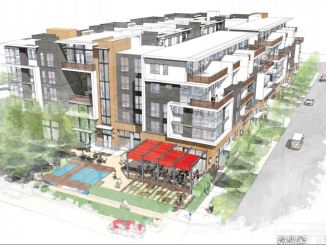
The following story first appeared in the Daily Post print edition on Nov. 28. To catch all of the important local news first, get in the habit of picking up the Daily Post in the mornings at 1,000 Mid-Peninsula locations.
BY ELAINE GOODMAN
Daily Post Correspondent
The city of Palo Alto’s budget surplus rebounded to $40.6 million for the 2021-22 fiscal year – up from $4.8 million in the previous year – as economic recovery from the Covid-19 pandemic continued.
The $40.6 million surplus, for the 12 months that ended June 30, isn’t back up to pre-pandemic levels. The city’s surplus peaked in the 2018-19 fiscal year at $76 million, following a $59.5 million surplus in the 2017-18 fiscal year.
But the city’s Annual Comprehensive Financial Report, which the City Council Finance Committee will review tomorrow, includes many signs that a recovery is underway.
Sales tax revenue was $32.7 million, a $3.6 million increase from the prior year.
Hotel tax revenue went from $5.2 million in the previous fiscal year to $16.9 million in 2021-22 – a 225% increase. Hotel tax is still below pre-pandemic levels, the report said. The average hotel occupancy rate was 63.5%, up from the prior year, but average room rates fell to $195, a 69% decrease.
Charges for city services rose $4.2 million, as in-person classes resumed and programs expanded. The city restored more than 20 jobs during the fiscal year.
“Economic recovery began in earnest in fiscal year 2022 with the expectation of full recovery over several years,” said the report from City Manager Ed Shikada and Chief Financial Officer Kiely Nose.
But Shikada and Nose also said there are signs of a “significant” economic slowdown at the end of this year.
“Consumer spending has leveled and the sentiment that a recession is likely has heightened,” they said.
The report breaks down the city’s finances into two categories. Governmental activities include basic city services such as police, fire, planning, transportation and community services, which are funded in large part through tax revenue.
Business-type activities are primarily city utilities including electric, water, and gas, as well as the airport.
In the two previous fiscal years, the city reported a deficit for governmental activities, meaning expenses were greater than revenues. But in both of those years, the business-type activities had a surplus that more than made up for the deficit in the governmental category, leaving the city with an overall surplus.
In the 2021-22 fiscal year, the business-type activities faced several challenges. The city increased gas rates by 3%, but the increase in revenue was partially offset by a decrease in revenue from water bills, as people used less water due to the drought.
Expenses rose for the gas utility as natural gas prices increased. Expenses were also up for the electric utility, because less hydropower was available and the city had to buy higher-priced electricity instead.
The city continued its practice of transferring money from its utilities to help pay for governmental activities. The $20.3 million transfer in the 2021-22 fiscal year included $14.1 million from the electric utility and $7.2 million from the gas utility.
Following the transfer, governmental activities ended up with a $51 million surplus and business-type activities had a $10.4 million deficit, for an overall city surplus of $40.6 million.
Both financial categories reported investment losses in 2021-22. The business-type activities had an investment loss of $16 million, compared to $2.2 million in investment earnings the previous year. Governmental services saw an investment loss of $24 million.
The city’s total outstanding long-term debt decreased during the fiscal year by $11.9 million, in part due to refinancing at a lower interest rate. The balance sheet was also boosted when the city received $8.2 million from the second installment of American Rescue Plan Act funding.
The report noted that the city’s “net position” – all of its assets minus liabilities – was $1.271 billion as of June 30. Of that, $1.175 billion is tied up in assets such as land, buildings and infrastructure.
Another $76.2 million is reserved for specific purposes. That leaves $20 million that “is unrestricted and may be used to meet the city’s ongoing obligations to its citizens and creditors,” the report said.




Problem solved? $40 million surplus divided by 1000 employees is $40,000 “retention bonus” for each and every one of these fine Essential Workers, starting right at the top with Ed Shikada. How he survives on just $573,307.57 a year total pay and benefits is beyond me.
Milk’s gone up you know. Eggs too. Who’s with me?
Don’t worry. Ed Shikata’s employment package also includes a $4 million home in Palo Alto, 75% of which is funded and paid by the taxpayers (from the general fund). So he is able to somehow survive on his modest $573k compensation package. His wife, Ruth Shikada, is also a public servant making over $500k in Santa Clara city government.
Shikada gets free home and $1 million in household compensation.
Don’t let the other 99 percent find out!
Or is it 99.5 percent?
Weren’t we asked to raise taxes in November, five months after the city booked this $40 million surplus? Why didn’t Pat Burt and Ed Shikada tell voters about this BEFORE the election?
Who is responsible for fixing potholes on El Camino?
It’s increasingly clear Palo Alto workers will get a large “Essential Worker” bonus of between $7,500 and $35,000. Instead of the giant one time cash bonus that electeds courting labor love to give, what if we gave them $20,000.00 each total $20M IN AN ESCROW ACCOUNT for five years with 20% released at day 365, 20% day 730, etc. If PA didn’t need any of that money in five years then the whole $20M would be released to the workers?
Why did the city go to the voters last fall for a $9 million tax increase and not disclose this surplus. The $40.6 million surplus should have been known to council members on July 1, 2022, when the city’s budget year closed. But they didn’t say one word about it.